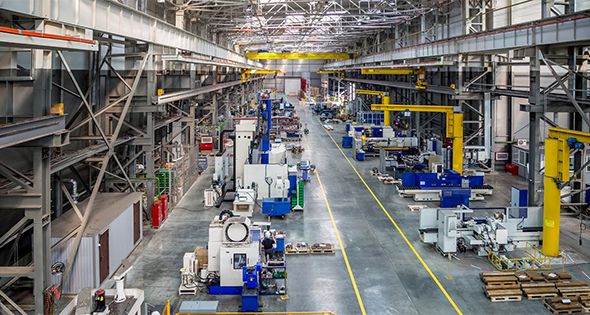
New Ideas Emerge for Both Sustainable and Fossil Fuel Technologies
16 Jan, 2021
The search for longer-lasting resources of energy that are more easily attainable, and more sustainable, has been one of industry’s biggest challenges for decades. Today, there are more choices than ever: hydropower, biomass, solar power, wind power, fossil fuels, nuclear energy. Each choice has its advantages and disadvantages. All mean more energy independence for the country.
American industry today has been struggling to keep fossil fuels in the mix as more and more U.S. states are working to phase out fossil fuels in favor of sustainable sources that are more environmentally friendly.
Yet, technological innovations continue to advance both types of energy in the country, even as the methods used for the generation of energy bumps up against both sociological and political forces at work to either guide or force the choice.
Renewable Renaissance
There have been movements inside some states to develop a totally renewable energy plan. For example, the Natural Resources Defense Council, a non-profit environmental advocacy group, reports that the proposed Illinois Clean Energy Jobs Act will help Illinois get to 100 percent clean energy by 2050, and drive growth in jobs for solar installers (averaging $21.58 an hour with a high school diploma) and wind turbine technicians (averaging $25.44 an hour with vocational training).
The Act is also expected to create more than $30 billion in new private investment in the state.
California is another state going for a 100 percent clean energy future. According to the U.S. Energy Information Administration (EIA), California ranked first in the nation as a producer of electricity from solar, geothermal, and biomass resources in 2018; and fourth in the nation in conventional hydroelectric power generation.
With the California Energy Commission (CEC), the state is developing the Building Initiative for Low-Emissions Development (BUILD) program to provide incentives for the deployment of near-zero-emission building technologies in low-income residential buildings.
Another California program, Renewable Energy for Agriculture (REAP), offers grants for the development of renewable energy technologies.
That program is funded through the California Climate Investments (CCI) that puts billions of cap-and-trade dollars to work reducing greenhouse gas emissions, strengthening the economy, and improving public health and the environment, particularly in low-income and disadvantaged communities.
Another CCI investment program, the Food Production Investment Program, established in 2018, encourages California food producers specifically to reduce greenhouse gas emissions. The program’s initial budget of $57 million ($60 million more was added in 2019) has been used to help accelerate the adoption of advanced energy efficiency and renewable energy technologies.
A Transitioning Dominance
Even amidst all of their sustainable energy work, California was still the seventh-largest producer of crude oil in the U.S. in 2018, according to the EIA. As of January, 2019, California ranked third in oil refining capacity.
But in general, in the United States, the sources of electricity generation have been shifting from coal to natural gas and renewables since the mid-2000s.
Changes in New York’s electricity generating mix have contributed to this trend. Coal’s share of New York’s electricity generation fell from 14 percent in 2005 to less than 1 percent in 2019, and natural gas-fired electricity grew from 22 percent to 36 percent, according to the EIA.
Electricity generation from renewable energy technologies collectively grew from 19 percent to 29 percent in the same period in New York.
New York adopted a renewable portfolio standard in 2004, followed by the Clean Energy Standard (CES) in 2015. The CES currently requires New York to generate 100 percent carbon-free electricity by 2040, and attain economy-wide net-zero carbon emissions by 2050.
The EIA reported that, in 2019, more electricity was generated from renewable sources in New York than in all but three states. New York’s 39.4 million megawatt hours (MWh) of renewable electricity generation was more than any other state east of the Mississippi River and accounted for 30 percent of the state’s total electricity generation in 2019.
The EIA reported that as of the beginning of 2019, 41 states had at least one installed wind turbine. Of these 41 states, Texas had the largest number of turbines, with more than 13,000, and the most installed wind capacity, at 24.2 gigawatts (GW).
States where wind adoption occurred early, such as California, have a high number of turbines relative to their wind generation capacity, compared with states where wind was adopted later, such as Texas, Iowa, Oklahoma, Kansas, and Illinois.
Solar energy electricity generation, meanwhile, is expected to experience steady growth, around 6.8 percent over the next decade, according to the EIA.
The Fossil Fuels Factor
Fossil fuels are beginning to experience a slow and steady decline as the transition to sustainable energy gains traction. For now, the mix of both has become the norm.
Coal is still a big energy producer in the country, but coal consumption has been declining since its peak in 2007 of 1.1 billion tons. In 2019, U.S. coal consumption totaled just 590 million tons.
The EIA Annual Coal Report (ACR) shows that U.S. coal mining productive capacity, or the maximum amount of coal that mines can produce in a year, totaled 1,009 million tons in 2019. This amount represents a 28 percent decrease from the peak productive coal mine capacity of 1,407 million tons as reported in 2009.
The EIA also reported that U.S. coal production declined by 35 percent during the same period because many coal mines closed and the remaining mines produced less coal.
The search for longer-lasting resources of energy that are more easily attainable, and more sustainable, has been one of industry’s biggest challenges for decades. Today, there are more choices than ever: hydropower, biomass, solar power, wind power, fossil fuels, nuclear energy. Each choice has its advantages and disadvantages. All mean more energy independence for the country.
American industry today has been struggling to keep fossil fuels in the mix as more and more U.S. states are working to phase out fossil fuels in favor of sustainable sources that are more environmentally friendly.
Yet, technological innovations continue to advance both types of energy in the country, even as the methods used for the generation of energy bumps up against both sociological and political forces at work to either guide or force the choice.
Renewable Renaissance
There have been movements inside some states to develop a totally renewable energy plan. For example, the Natural Resources Defense Council, a non-profit environmental advocacy group, reports that the proposed Illinois Clean Energy Jobs Act will help Illinois get to 100 percent clean energy by 2050, and drive growth in jobs for solar installers (averaging $21.58 an hour with a high school diploma) and wind turbine technicians (averaging $25.44 an hour with vocational training).
The Act is also expected to create more than $30 billion in new private investment in the state.
California is another state going for a 100 percent clean energy future. According to the U.S. Energy Information Administration (EIA), California ranked first in the nation as a producer of electricity from solar, geothermal, and biomass resources in 2018; and fourth in the nation in conventional hydroelectric power generation.
With the California Energy Commission (CEC), the state is developing the Building Initiative for Low-Emissions Development (BUILD) program to provide incentives for the deployment of near-zero-emission building technologies in low-income residential buildings.
Another California program, Renewable Energy for Agriculture (REAP), offers grants for the development of renewable energy technologies.
That program is funded through the California Climate Investments (CCI) that puts billions of cap-and-trade dollars to work reducing greenhouse gas emissions, strengthening the economy, and improving public health and the environment, particularly in low-income and disadvantaged communities.
Another CCI investment program, the Food Production Investment Program, established in 2018, encourages California food producers specifically to reduce greenhouse gas emissions. The program’s initial budget of $57 million ($60 million more was added in 2019) has been used to help accelerate the adoption of advanced energy efficiency and renewable energy technologies.
A Transitioning Dominance
Even amidst all of their sustainable energy work, California was still the seventh-largest producer of crude oil in the U.S. in 2018, according to the EIA. As of January, 2019, California ranked third in oil refining capacity.
But in general, in the United States, the sources of electricity generation have been shifting from coal to natural gas and renewables since the mid-2000s.
Changes in New York’s electricity generating mix have contributed to this trend. Coal’s share of New York’s electricity generation fell from 14 percent in 2005 to less than 1 percent in 2019, and natural gas-fired electricity grew from 22 percent to 36 percent, according to the EIA.
Electricity generation from renewable energy technologies collectively grew from 19 percent to 29 percent in the same period in New York.
New York adopted a renewable portfolio standard in 2004, followed by the Clean Energy Standard (CES) in 2015. The CES currently requires New York to generate 100 percent carbon-free electricity by 2040, and attain economy-wide net-zero carbon emissions by 2050.
The EIA reported that, in 2019, more electricity was generated from renewable sources in New York than in all but three states. New York’s 39.4 million megawatt hours (MWh) of renewable electricity generation was more than any other state east of the Mississippi River and accounted for 30 percent of the state’s total electricity generation in 2019.
The EIA reported that as of the beginning of 2019, 41 states had at least one installed wind turbine. Of these 41 states, Texas had the largest number of turbines, with more than 13,000, and the most installed wind capacity, at 24.2 gigawatts (GW).
States where wind adoption occurred early, such as California, have a high number of turbines relative to their wind generation capacity, compared with states where wind was adopted later, such as Texas, Iowa, Oklahoma, Kansas, and Illinois.
Solar energy electricity generation, meanwhile, is expected to experience steady growth, around 6.8 percent over the next decade, according to the EIA.
The Fossil Fuels Factor
Fossil fuels are beginning to experience a slow and steady decline as the transition to sustainable energy gains traction. For now, the mix of both has become the norm.
Coal is still a big energy producer in the country, but coal consumption has been declining since its peak in 2007 of 1.1 billion tons. In 2019, U.S. coal consumption totaled just 590 million tons.
The EIA Annual Coal Report (ACR) shows that U.S. coal mining productive capacity, or the maximum amount of coal that mines can produce in a year, totaled 1,009 million tons in 2019. This amount represents a 28 percent decrease from the peak productive coal mine capacity of 1,407 million tons as reported in 2009.
The EIA also reported that U.S. coal production declined by 35 percent during the same period because many coal mines closed and the remaining mines produced less coal.
Tapping Technology for Both
Technological developments for the use or recovery of renewable energy and fossil fuel have both ticked up recently in a sort of tandem development cycle not seen before.
One interesting application of sustainable energy technology is in Peachtree Corners, part of the Atlanta metro area and the country’s first smart city environment. The area installed the first ever road surface system using solar panels to produce energy for a solarpowered EV charging station located at city hall. The solar power is generated by a specially-formulated tempered glass solar panel roadway surface able to withstand the weight of a semi-truck.
The Peachtree Corners system will produce more than 1,300 kilowatt-hours of electricity annually for the charger at city hall at no cost to electric vehicle motorists.
The demonstration project at Peachtree Corners, plus other demonstrations in the U.S. using similar technology that is being funded by the U.S. Department of Transportation, is just the beginning of what could be more solar road panels charging cars parked on solar panels in parking lots, then later, being used on roadways across the country.
Other features of the solar glass panels include the ability to make the roadway snow and ice free; using LED lights for traffic lines and signage; and being impervious to potholes, according to Solar Roadways, a solar road development company based in Sandpoint, Idaho.
The hope is that this new, clean technology will eventually modernize the country’s infrastructure.
On the fossil fuel side is a new technological developing in hydraulic fracking, or fracturing, which is being investigated as a relatively new method of extracting natural gas and oil from large shale basins located in the Appalachians, the Rocky Mountains, and in large areas of Texas using horizontal drilling following deep vertical drilling.
Hydraulic fracturing is an oil and gas well development process that typically involves injecting water, sand, and chemicals under high pressure into a bedrock formation inside a drilled well. This process is intended to create new fractures in the rock as well as increase the size, extent, and connectivity of existing fractures.
Complaints of ecological damage being caused by fracking, plus an increase in earthquakes especially in Oklahoma attributed to fracking, have become the impetus for new technology development to limit these problems.
Engineers from U.S. Department of Energy’s National Energy Technology Laboratory (NETL) are drilling a nearly 10,000-foot-deep well in the Paradox Basin of Utah late this year, with the goal of trying out new fracking strategies to extract oil from unconventional shales in the region. The Utah Geological Survey estimates undiscovered recoverable oil reserves in the Paradox Basin of at least 471 million barrels.
The well will be used to collect core samples, images and other information to develop fracture network and geomechanical models that will be used to predict where natural fractures and faults are located, leading to maximized oil production.
This 4.5 year project, scheduled for completion in March 2024, received $8 million in federal funding, and approximately $3 million from project partners. A 3D seismic study of the project area previously completed by project partner, U.K.-based Zephyr Energy (with U.S. operations in Parker, Colorado), and will be used to complement the current effort.
The Paradox resource project started about a year ago, according to Stephen Henry, project manager and member of the NETL team. “They’ll spend the first year trying to find an opportunity for a characterization well,” he says.
NETL has recently broken ground on the project, working with Zephyr. The well is located in a thermally mature and structurally complex region of the Paradox Basin, which is likely to lead to higher density of natural fractures, Henry says. “That data and analysis will be used to develop some strategies about how to best drill and stimulate or not to stimulate wells in the Paradox basin,” Henry says.
They are looking at how to best target natural fractures or use tactical smaller scale strategies that wouldn’t cause some of the usual issues with hydraulic fracking. “By year three of the project, once there is a better handle on how to better drill the wells and stimulate them (ie, enhance their oil production), they will give that data to an operator for them to implement it in a horizontal well to generate production,” Henry says.
“This is a longer term project but it will continue to enable us to have us a self-sustainable oil supply moving forward, which is great for energy security and the economy.”
Side Note
New Mexico: Home to Some of the Lowest Renewable Energy Costs in the U.S.
ALBUQUERQUE – According to the RE100’s 2020 annual report, 75 percent of member companies are looking to go 100 percent renewable by 2030. A growing number of other are seeking renewable energy options that are both good for business and the environment.
In 2019, New Mexico signed off on the landmark Energy Transition Act which increases the state’s overall Renewable Portfolio Standard target to 100 percent of electricity sales from carbon-free generation by 2045. Concurrently with that passage, the Public Service Company of New Mexico (PNM), the largest electrical utility provider in the state, committed to holding a zero-carbon portfolio by 2040.
These efforts are paying dividends. According to the National Renewable Energy Laboratory’s reporting, New Mexico has the lowest cost of renewable electricity in the U.S. at the grid intersection point and is 19.8 percent below the national average.
The U.S. Energy Information Administration states New Mexico’s climate is one of the top three in the nation with the best energy resource. Additionally, land acquisition costs are substantially lower in New Mexico than other Rocky Mountain region states. The average pasture per acre in New Mexico is $4.17 compared with neighboring states’ average of $6.83.
Companies such as Kairos Power, which develops advanced reactor technologies for use in the energy sector, have expanded in New Mexico to take advantage of savings as well as join the vibrant renewable energy ecosystem of Albuquerque’s 12,700 acre master-planned community, Mesa del Sol – the state’s first foray into smart grid technology and efficient energy systems through the partnership of Japan’s NEDO organization and Los Alamos National Labs.
For more information about AED, visit www.abq.org.
Related Posts
-

Pinellas County, Florida Celebrates Ribbon Cutting of the ARK Innovation Center Business Incubator
-

Time To “Pivot, Stretch, And Adapt”
-

More Efficient Agriculture Techniques are Coming into the Focus
-

Logistics Getting on a Quicker, more Focused Track
-

Opportunity Zones and Post-COVID-19 Economic Recovery
-

New Goals and New Internet Tech Help Build Base for Advanced Manufacturing
-

Business Services Today Focus on Human Resources, Data Analytics
-

Ready to Shift into High Gear
-

The New Forestry Momentum
-

The Manufacturing Trifecta: Better Design Methods, Streamlined Production, Reduced Costs









